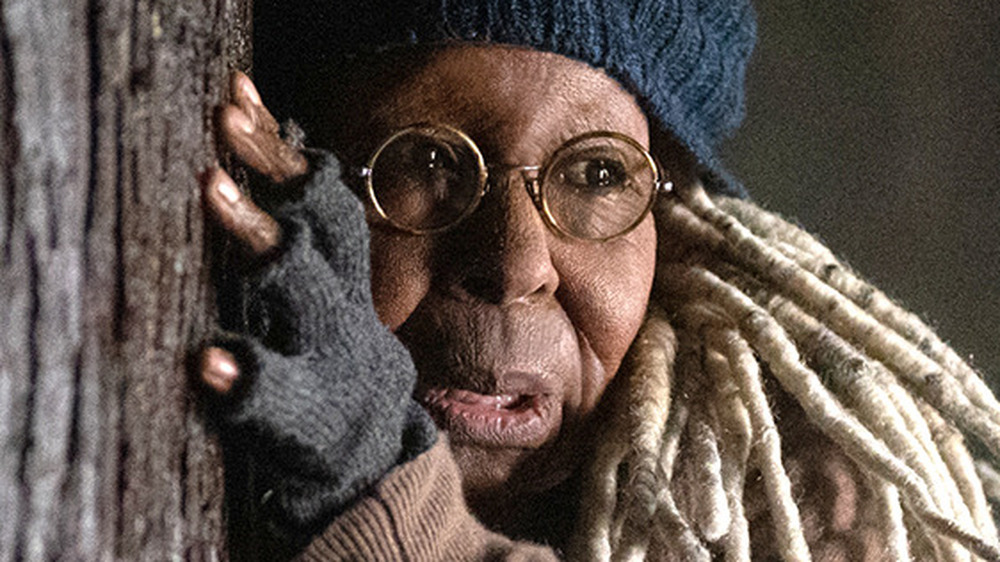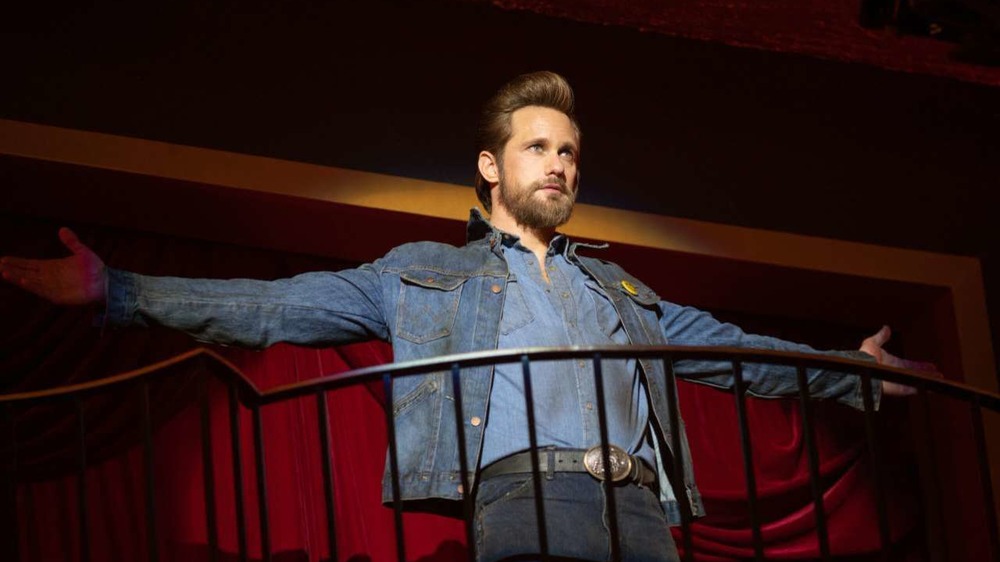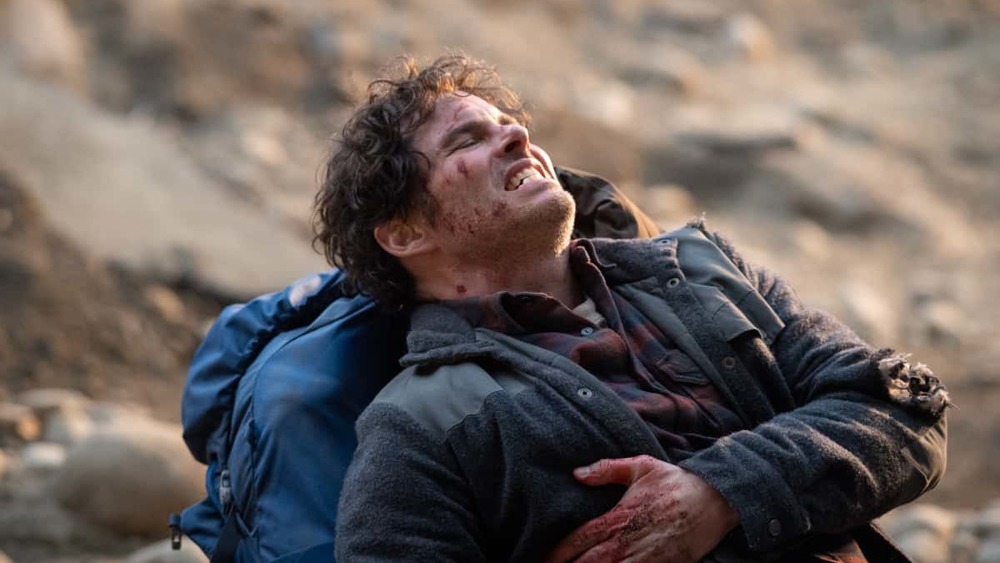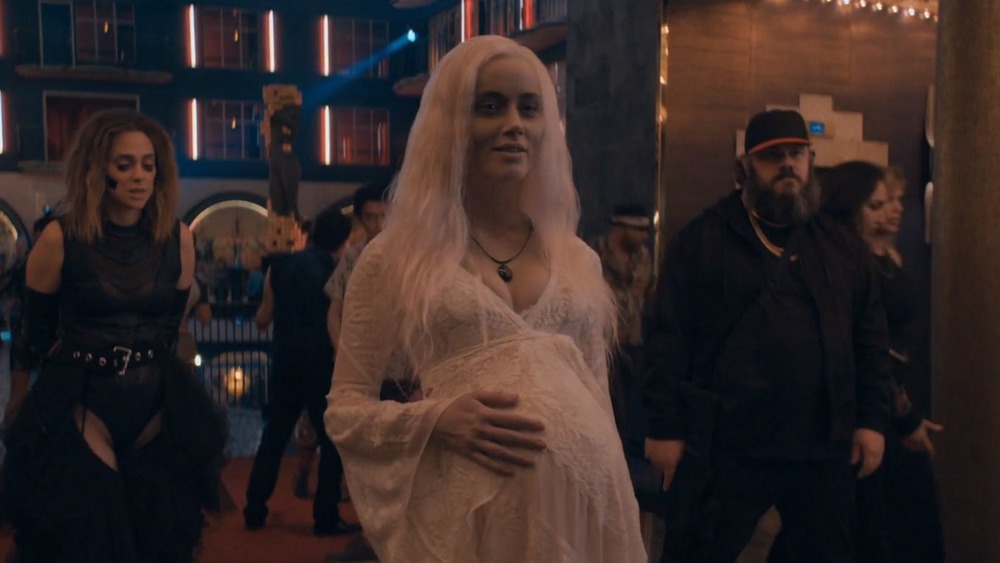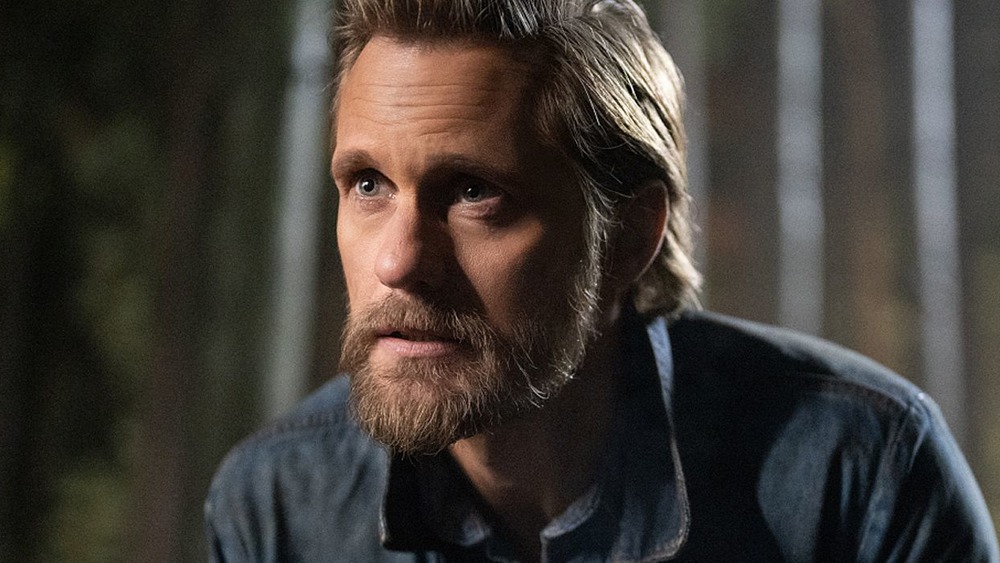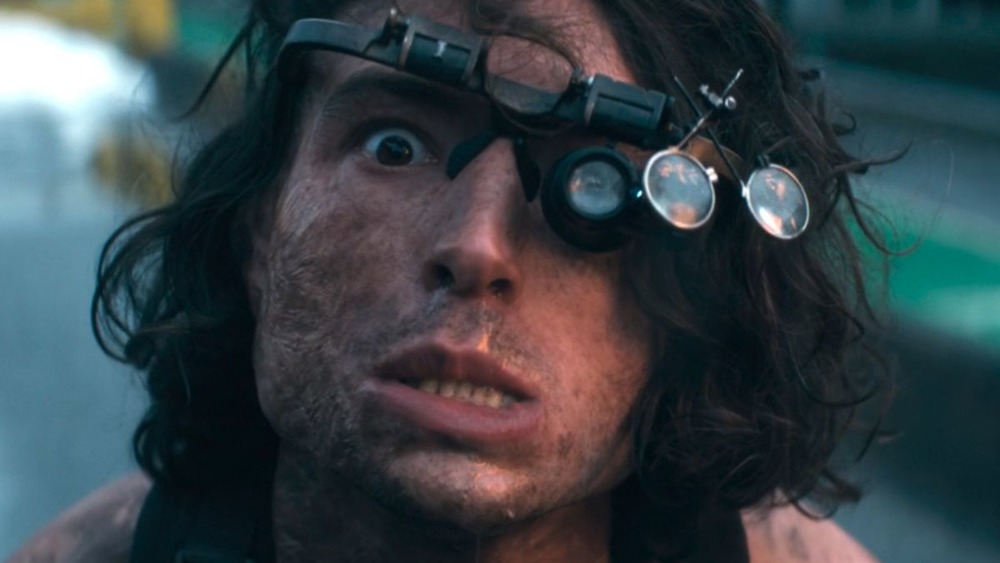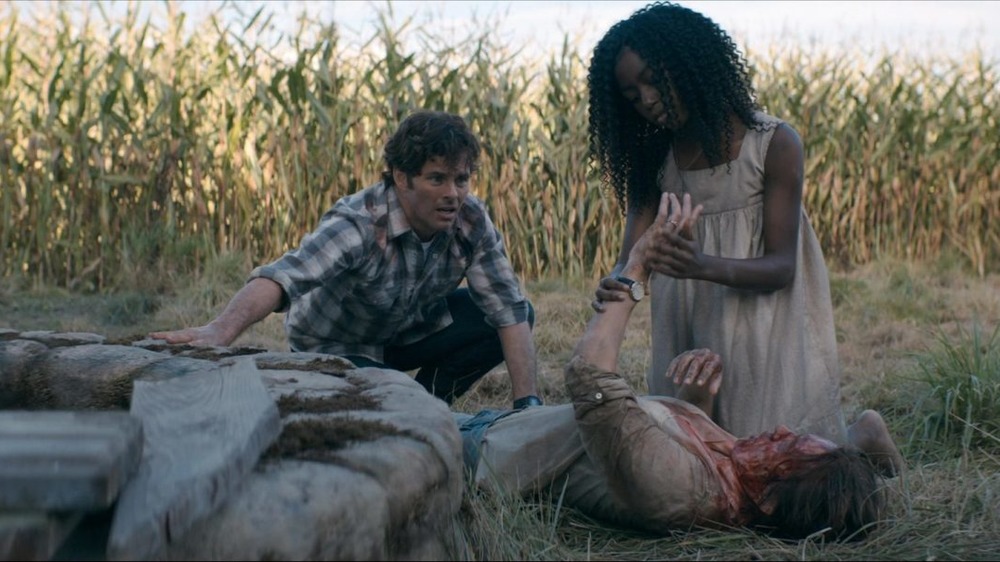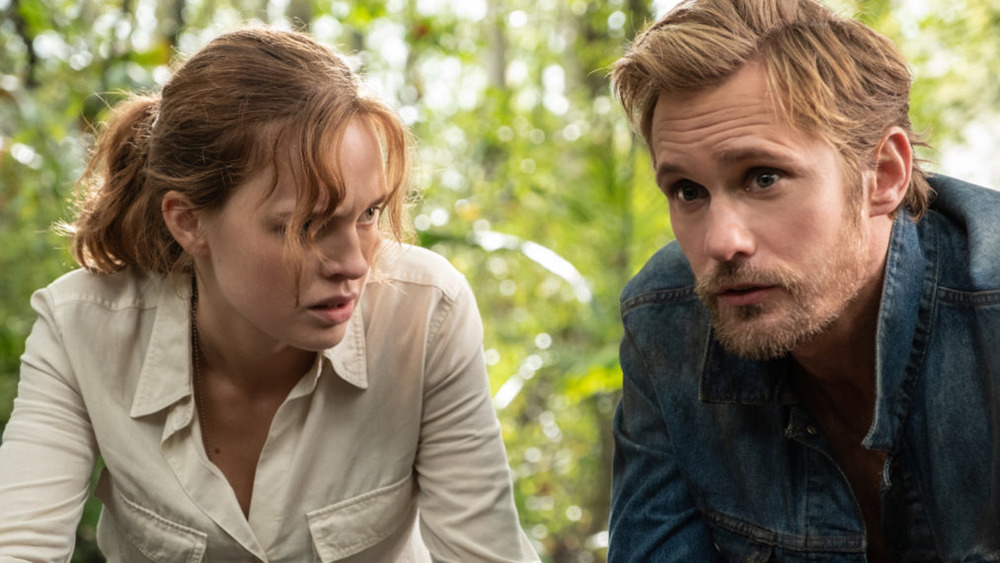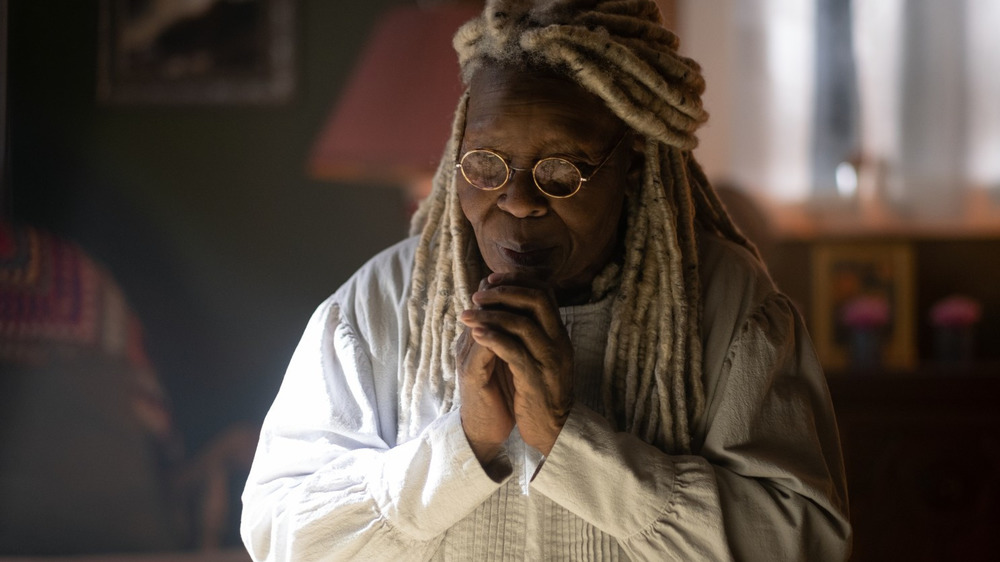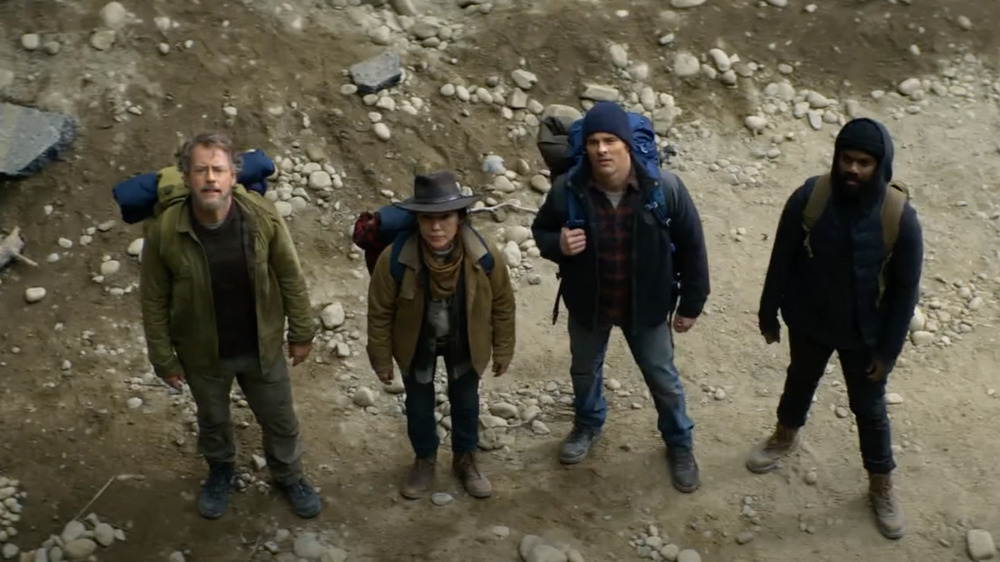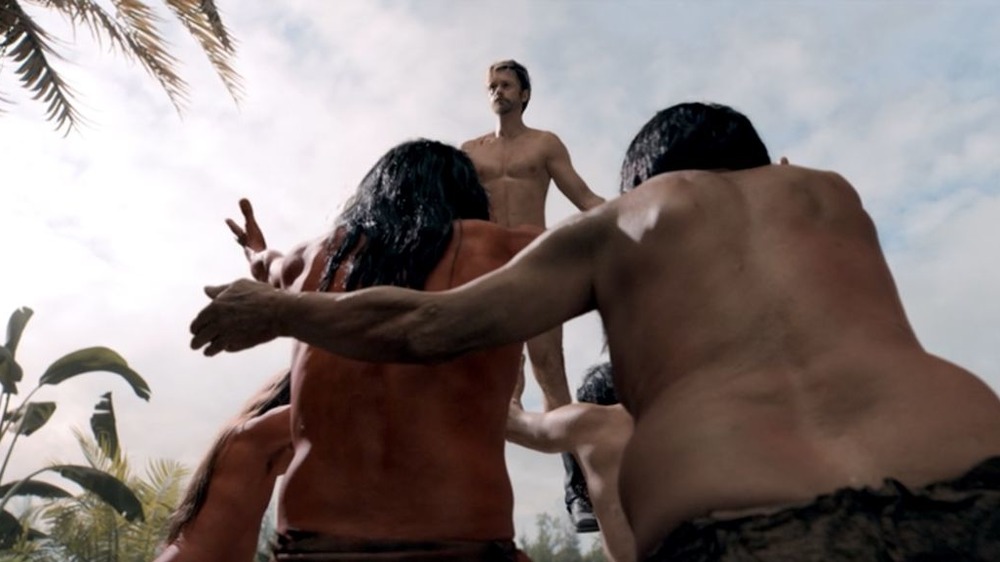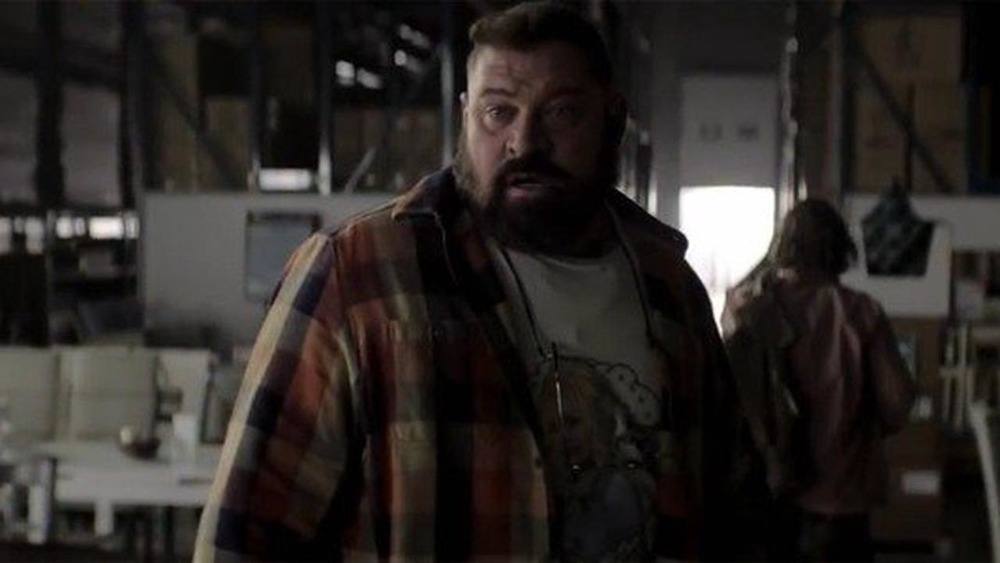The Ending Of The Stand Explained
Adapted from the massive Stephen King novel of the same name, the CBS All Access series The Stand wrapped up its nine-episode season in two episodes: A penultimate effects-filled showstopper appropriately titled "The Stand" and a quieter epilogue made up of largely new material titled "The Circle Closes." Considering the series' large ensemble cast and the extended nature of the story conclusions, there's quite a lot packed into the two episodes — which obviously leaves a lot to unpack.
While some of the events of The Stand's ending are fairly straightforward, many are not, and some are downright baffling. Even if you are familiar with King's novel, the miniseries made enough changes to the source material that it's understandable if you found yourself a little lost. From prophetic instructions to deadly cosmic showdowns and Biblical allegories playing out in a subconscious vision, here are some of the most confusing aspects of the ending of The Stand, explained.
What was with that lightning ball?
Once Glen (Greg Kinnear), Ray (Irene Bedard), and Larry (Jovan Adepo) finally make it to Randall Flagg's (Alexander Skarsgård) empire of debauchery in Las Vegas to make their final stand against the forces of evil, they are immediately arrested and put on trial. After Glen goads Flagg's underling Lloyd (Nat Wolff) into shooting him on the spot in the courtroom, Ray and Larry are sentenced to death via drowning. The pair are dragged out into an empty pool and chained to the bottom as the pool is slowly filled with water, in front of a crowd of raucous spectators.
However, before Larry and Ray can meet their watery end, all hell — or possibly, quite the opposite — breaks loose as thick clouds gather over the building's central atrium and start zapping people with lightning bolts. Soon the lightning coalesces into a floating ball that seems to consciously target Flagg's minions, and finishes by repeatedly zapping Flagg himself, then destroying everything by detonating a nuclear warhead (and putting Ray and Larry out of their misery in the process).
Safe to say, that was no ordinary lightning. In the book, although the circumstances are a bit different, the warhead is detonated by a "Hand of God," described as a giant, glowing hand in the sky. If you look closely as the clouds wrap around Flagg's building, they do resemble fingers, meaning that the lightning was basically divine intervention. Given the strong spiritual undertones in the series, it's fitting that an act of God would be the thing that would finally take out Flagg... at least for the time being.
How did Stu get back to Boulder?
Although four set out from Boulder to Las Vegas — on foot, based on Mother Abigail's (Whoopi Goldberg) instructions/prophecy — only three arrive, just as she predicted. Stu Redman (James Marsden) breaks his leg en route and is left behind along with Glen's dog Kojak, some travel supplies, and enough pain meds to either take the edge off for a few days... or provide Stu with a swift and painless exit. However, it never comes to that; it turns out that Dayna Jurgens' (Natalie Martinez) desperate warning note to gentle giant Tom Cullen (Brad William Henke), telling him to "RUN," was successful, despite his illiteracy. After hiding from Flagg's henchmen under a pile of dead bodies, Tom was able to escape Las Vegas, and started the long walk toward Boulder.
On his way back, Tom's attention is drawn by Kojak, whom he joyfully follows. While we never see Tom's reunion with Stu, we can infer it happens when Stu finally makes it back to Boulder along with Tom and Kojak, telling Frannie (Odessa Young) that Tom saved his life. By the time they make it back, Stu is walking (albeit with a limp), and it's clear from Frannie's narration that at least a few weeks, and possibly even several months have passed. In the book, this time gap is explained by Tom nursing Stu back to health in a hunting lodge, aided by the ghost of Nick Andros (Henry Zaga). In the show, we'll just have to use our imaginations.
What was Nadine's baby?
One of the creepier subplots in a miniseries filled to the brim with creepiness was Nadine's (Amber Heard) supernatural pregnancy, fathered by the disembodied spirit of Randall Flagg. You see, Nadine encountered Flagg in what appeared to be a hallucination while she was crossing the desert to get to Las Vegas, and they finally consummated their disturbing relationship, with him transforming into a horrific demon mid-act. He then sent a car to transport her the rest of the way, and it didn't take very long for her to realize she was pregnant with his... child?
Who or what was gestating inside Nadine's womb will always be left to viewers' imaginations, but we can at least venture to say that it wasn't a healthy bouncing baby human. For one thing, Nadine went from being a virgin to seemingly nine months pregnant in the span of just a few days. For another, it was clear from Nadine's corpse-like appearance and the sharp movements beneath her skin that whatever was inside her was consuming her from the inside out. Nadine finally realized that she was never intended to survive the birth, and committed suicide by throwing herself from Flagg's penthouse window. From Flagg's devastated reaction at the loss of his progeny, we can assume that whatever Nadine was about to give birth to was instrumental to his plan, and most likely intended to be the demonic successor to Flagg himself. Fortunately for everyone, that plan never came to fruition.
Who was Randall Flagg?
Although The Stand is filled with human characters, it is ultimately about a war between cosmic forces of good and evil. On the side of good, representing the will of God, is Mother Abigail, and on the side of evil, there is Randall Flagg. But unlike Mother Abigail, who is incredibly old and uniquely gifted but undeniably human, Flagg is... something else. Not only can he fly and impregnate people from across hundreds of miles, but he also can apparently regenerate after being repeatedly struck by lightning and then vaporized by a nuclear blast.
To call Flagg "the Devil" is probably both the right answer and an oversimplification. Mother Abigail alludes to the idea that he is actually the son of the Devil, during her conversation with Frannie in "The Circle Closes," drawing an obvious parallel between Flagg and the Christian belief that Jesus Christ was the son of God. In Stephen King's books, Flagg is more of an ageless, malevolent wizard who repeatedly shows up to push characters toward darkness. So in the broader scope of King's works, Flagg is both a sort of living Devil, and also something else a little more human. In The Stand, however, the character leans heavily into the Devil (or son of the Devil) persona, both in how some of his actions mirror Biblical stories, and in his demand to be worshipped.
Why did the Trashcan Man bring the bomb to the hotel?
The unnamed Trashcan Man (Ezra Miller) is one of the more enigmatic characters in The Stand, characterized only by his pyromania and his erratic behavior that indicates some sort of neurodivergence. He's introduced well into the series, and is tasked by Flagg to go retrieve a nuclear warhead that Flagg intends to drop on the Boulder Free Zone, wiping out Mother Abigail and her followers. But instead, the Trashcan Man (his skin literally melting off his body due to the radiation of the warhead) drives the warhead into Flagg's hotel, where it is then detonated by the Hand of God.
In the miniseries, there's no explanation for the Trashcan Man's odd behavior except that, well, he's odd. He seems to think he's doing Flagg a favor, but we never get any context as to why. In the book, it's a little more fleshed out; the Trashcan Man is bringing Flagg a bomb to make up for accidentally wiping out a big chunk of his air force. That scene never happens in the miniseries, so the Trashcan Man's motivations are much more vague. Taking him at his word, he simply misunderstands what Flagg wants him to do with the warhead, and thinks it makes sense to bring it straight to his leader.
Who was the girl in the cornfield?
In "The Circle Closes," a large part of the storyline is brand new for the miniseries, filling in some of the gaps of the book's ending. After Stu and Frannie decide to depart Boulder for Maine, they pause in Nebraska to rest and restock, taking up residence in an abandoned farmhouse. Only the cornfield outside the house isn't as abandoned as they think; a young woman (Kendall Joy Hall) is staying in a tent in the field, singing hymns and rocking a baby doll. At first, the girl's presence seems ominous, but later, once she helps Stu save Frannie after she falls down a well and then miraculously heals Frannie's wounds, it's clear she's on the side of good.
From the silver cross hanging around her neck and the way she talks to Stu, the implication is that she's a reincarnated version of Mother Abigail, or at least someone with similar gifts. Her presence is never really explained, and she vanishes once Stu and Frannie are safe again. Considering that Flagg is shown to still be alive following his evident death in the previous episode, introducing the girl shows that there is also still someone like Mother Abigail in the world to help balance him out. As Mother Abigail tells Frannie, and Frannie repeats to Stu, "the wheel never stops turning," meaning that history will continue to repeat, over and over. The girl seems intended to show that as long as there is evil, there will also be powerful good.
What was the significance of Frannie's final scene with Flagg?
After tumbling into the well, Frannie dreams of encountering Flagg in a forest. There, he names her biggest fears: that she will die of her injuries, leaving her baby to die of exposure, and that Stu will die in an accident before he can get back to them. But he offers her a way to prevent that outcome if she'll give him just one thing — a kiss, which will give him the ability to see through her eyes every now and then.
For a second, it looks like Frannie may give in, but instead she bites him hard enough to draw blood. "Not for my husband, not for my baby, not for the world itself," she screams at him before turning away. "Get thee behind me, you f***ing bastard." While the translation obviously takes a bit of liberty, Frannie is actually quoting the Bible, in the book of Matthew, when Jesus tells Peter, "Get behind me, Satan! You are a stumbling block to me; you do not have in mind the concerns of God, but merely human concerns."
Even what Flagg is offering Frannie is another take on a Bible story: when the Devil tempts Jesus in the desert earlier in Matthew. Just like the Devil in the Bible story, Flagg offers Frannie everything her heart desires, and just like Jesus, Frannie refuses to be tempted. In doing so, Frannie finally gets to make her own stand against evil, as the others got to do in Las Vegas.
What was the significance of Frannie's final conversation with Mother Abigail?
Similarly to how Frannie's last confrontation with Flagg is heavy with Biblical references, so is her conversation with Mother Abigail after she leaves Flagg behind. Upon coming upon her deceased spiritual guide relaxing on her front porch, Frannie voices her fears to Mother Abigail. After praising Frannie for resisting the temptation of evil and telling her that there is always more work yet to do, Mother Abigail offers her some hope by bestowing a blessing on her. She tells her that she will have five children, 20 grandchildren, and 70 great-grandchildren, and that her children will "replenish the earth."
This also mirrors a story in the Bible in the book of Genesis, when God rewards Abram's faithfulness by telling him that his family will become a great nation, blessed by God, and that they shall become the recipients of the promised land. The parallel is clear: by rejecting Flagg, Frannie has been blessed by God for great things. Later, Frannie echoes Mother Abigail's words to Stu, when she tells him that their struggle will always continue, but their command is always the same. "Be true. Stand." Through her encounter with Mother Abigail and her talk with Stu, the finale of The Stand makes it clear that Frannie knows that taking a stand against evil isn't a one-time action, but a continuous way of living in the face of hardship, and that Frannie is prepared to do what it takes to remain forever true to the forces of good.
Why did the group have to go to Las Vegas in the first place?
After the dust and fire of Las Vegas have settled at the end of "The Stand," it's easy to wonder... what was the point? Why did Mother Abigail even bother sending the four of them there, if they were all going to die and Sin City was going to be blown up by a nuclear warhead anyway? Even the hearts it seemed like Larry and Ray were changing right at the end — as some of Flagg's followers started to defiantly chant "I will fear no evil" along with them — didn't ultimately seem to matter, since those people died along with the rest of the inhabitants of Las Vegas.
Obviously, it's hard to say what would have happened if the quartet had never set out for Vegas, but it's very possible that the only reason the Hand of God appeared over Flagg's casino to begin with was a response to the demonstration of faith from Larry, Ray, and Glen. By refusing to bow to Flagg, first with Glen in the courtroom, and then with Larry and Ray in the pool, they demonstrated conviction and faith to the people of Las Vegas, and that faith spread to others who would've otherwise been complacent. Many of The Stand's themes are about the power of individuals to resist evil, and in the goodness of community being a strong force for goodness in general. So even though Larry, Ray, and Glen died, their commitment to righteousness was likely the thing that saved their friends.
What was the significance of Flagg's ending?
After Frannie's inspiring "Be true, stand" speech, The Stand then pivots to a bit of a downer ending, as Flagg — wearing only a pair of cowboy boots and nothing else — stumbles into a village he showed Frannie earlier in her vision. The indiginous people there, Flagg tells Frannie, were untouched by the superflu, thanks to their complete isolation from "modern man." Why he's showing them to her remains unclear at the time, but later, it becomes evident that he was giving her a glimpse into his future plans.
After supernaturally killing a member of their tribe, Flagg levitates and introduces himself as "Russell Faraday," demanding that they worship him, and the frightened people swiftly obey. Of course, the obvious takeaway is what Mother Abigail says: the wheel never stops turning, which means Flagg will continue to corrupt and gain power wherever he can, and it will be up to the good people of the world to resist his influence. There's no such thing as a permanent victory over evil; it will always return in some form.
It's interesting to note, though, that the name he gives himself — Faraday — has another meaning beyond simply using the same initials. A Faraday cage is an enclosure used to block electromagnetic fields, which seems significant considering Flagg was defeated by a ball of lightning sent by God. Calling himself "Faraday" feels almost like a challenge to God, insisting that the next time God comes after him, he'll be ready.
What happened to the people of Boulder?
The final episode of The Stand isn't really much of an epilogue for anyone other than Frannie, Stu, and little baby Abigail. As for the rest of the growing population of Boulder, including Tom Cullen and the previously nonverbal child Joe (Gordon Cormier), who finally begins speaking once Randall Flagg is vanquished in Las Vegas, we don't ever learn what becomes of them. However, before Frannie and Stu leave, they talk about how the town has continued to grow, to the point where they don't know all of the residents anymore, and how it seems as though it's only a matter of time before all of the familiar vices and failings of human society creep inside its peaceful borders.
This echoes what Frannie says earlier, in her musing to her newborn baby that she's not sure humanity is capable of picking a better path than before, even with a complete reset. And it's repeated again toward the end of the episode, when Mother Abigail and later Frannie talk about the ever-turning wheel, and the understanding that both the good and the bad parts of human history tend to repeat. So what does that mean for Boulder? It means that they'll get back to normal, eventually, with all that normal entails. It means the residents will find happiness and friendship and love, but that there will also be pain and bitterness and violence. It means that they won't get a happy ending, but they also won't get a sad one, because as Frannie says, most stories don't end at all.
